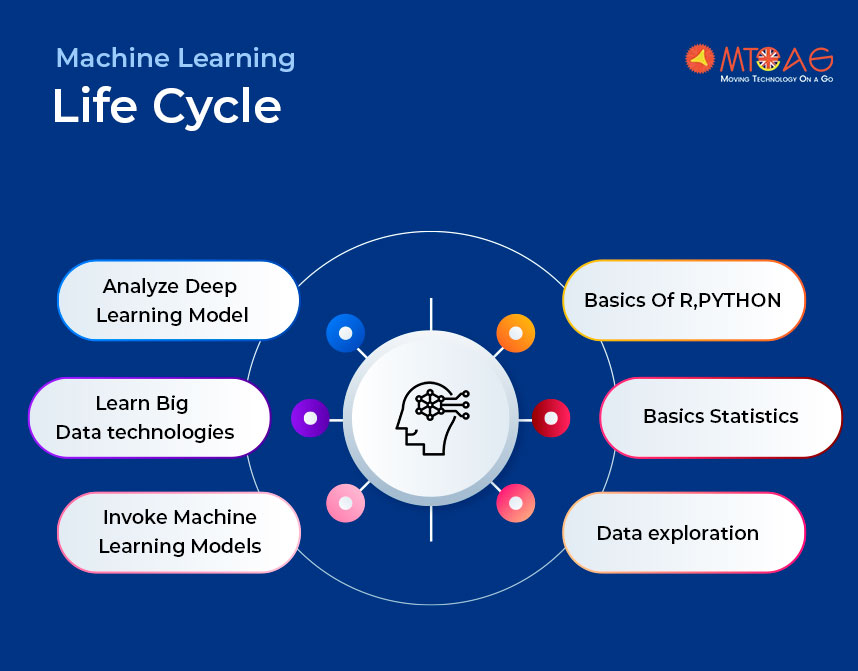Introduction to Machine Learning

Machine learning frenzy has overtaken the company sector within the last year. It is an engineering science that uses massive data sets and training methods to "give computers the flexibility to find out without being explicitly done," in step with Arthur Samuel, the pc scientist who prepared the phrase half a century ago.
Many executives believe machine learning will likely bring a paradigm change, similar to the Internet and, therefore, the notebook computer. Per a recent PwC poll, 30% of company leaders predict AI will become the foremost disruptive force within their sector in the next five years. Machine learning businesses received quite $5 billion in capital financing in 2016.
According to the McKinsey Global Institute, machine learning offers "wide relevance to several everyday job tasks," like pattern identification, language generation and interpretation, and process optimization. So, if you're tech-savvy and want to know about Machine learning and its importance, this blog will serve the purpose.
Importance of Machine Learning
Three important advancements have fueled the recent buzz, lowering the barrier to entry for businesses of all sizes and stages who wish to use machine learning.
More data and lower storage costs
Due to the appearance of cloud-based technologies and the falling cost of storing data through services like Amazon Redshift, business-critical apps are now generating and storing more data than ever before.
Open-source libraries
Cutting-edge algorithms are more accessible to a bigger audience of information scientists and generalist software developers because of widely available ML frameworks like Google's TensorFlow and sci-kit-learn.
Greater computing power
With the appearance of cloud-based platforms and bespoke hardware designed for machine learning, these applications can now operate quicker and at a less expensive cost, making them more suitable for a large range of business demands. Within the abstract, there is compelling justification for taking a position in machine learning. But, in practice, how do businesses take advantage of this technology? How is ML being used today to assist businesses in generating value, decreasing expenses, and increasing ROI?
In broad strokes, a typical consumer or corporate business's customer acquisition funnel consists of three stages: segmenting your client base to spot and fulfill their requirements, engaging them with acceptable content at the correct time, and converting them into product users.
Use Cases of Machine Learning
Machine learning has been widely used by startups and major corporations alike across the entire user acquisition funnel. Amazon is a key example here:” In his 2017 letter to shareholders, CEO Jeff Bezos remarked on the ways in which machine learning contributes to Amazon.com. However, segmenting users and showing them relevant products is just the primary step: many retailers use ML to regulate branding, copy, and promotional pricing on the fly to maximize the likelihood of procurement for any given customer.
Salesforce just released Einstein, a software that analyzes CRM data to form personalized suggestions to spice up the likelihood that a specific prospect would convert from a pitch, including suggesting the most effective time to send an email. Obtaining consumers is, of course, simply the primary step. Providing prompt and effective customer care, whether for ecommerce or the workplace, is critical to keeping users and preventing churn.
Machine learning is currently being used by dozens of companies to improve customer service. For example, Ocado, a Brazilian grocer, built a bespoke system that assesses the sentiment of customer support inquiries and puts negative replies to the head of the assistance queue using Google machine learning APIs. s.
Machine learning is being used in the back office by a wide range of enterprises to construct more robust, detailed, and accurate forecasting models.
Walmart held a competition on the data science recruiting site Kaggle in 2016, asking entrants to construct a model that anticipated sales by department for each shop using historical data from 45 stores.
Fraud cost the average online retailer about 7% of overall sales in 2016. Salaries for fraud management workers, chargebacks, and valid transactions disallowed due to false positives are all factors that contribute to this cost.
Read More: AI in the modern healthcare system
Machine Learning's Importance Will Increase
 Machine Learning[/caption]
Machine Learning[/caption]We've looked at some of the most important ways that ML may provide immediate and direct benefits to a range of businesses. It would be a mistake to think of ML as a corporate panaceaâ€. In the end, an ML system's performance is only as good as the data it is trained on, and many of an organization's key decisions are "edge cases" that require some human judgment and anecdotal experience to assess.
Rather than getting seduced by the abstract promise of machine learning, leaders should assess their primary business difficulties and compare them to machine learning's key capability: making sense of a large amount of data. Given the variety of case examples presented above, the chances of ML approaches assisting you may be more than you think.
According to Helomics' analysis, the worldwide AI market is estimated to reach $20 billion by 2025. And it's not just AI that presents prospects for growth; ML also threatens to disrupt long-standing industries. AI is one of humanity's best partners in the future, enabling corporate executives to make better informed decisions, researchers to look at challenges in new ways, and providing insights around the clock that no person could possibly understand alone.
It also comes with a huge market potential and the ability to ride the next great disruption's wave. In fact, according to a PWC poll from 2021, AI technology is already a mainstream component of their firm for 86 percent of respondents. As a consequence of the COVID-19 epidemic and its influence on organizations and workplaces throughout the world, more than 52% said they are speeding up their adoption plans for machine learning and AI technologies.
Contextualize vast databases quickly
 Contextualize vast databases quickly[/caption]
Contextualize vast databases quickly[/caption]Because of how much information is created, kept, and accessible in nearly every enterprise on the globe these days, "Big Data" has become a common phrase. Data is fantastic, but it's only useful if you can connect the dots and draw conclusions from it. The more information you have, the better... But there's a catch: databases have gotten so large that no person could conceivably comprehend all of that data in a single sitting. Scratching the surface of some of these datasets would take a lifetime, but ML makes it a simple and continual process.
The more it works, the more it improves and "learns."
The majority of machine learning algorithms are built to improve their performance as they process more data. CoRE can compare potential drug formulations to known patient responses in live treatment environments, thanks to the Helomics database of 150,000 deidentified patient records, 131 tumor types, and 30 types of cancer available around the clock. This gives cancer researchers and oncologists more insight into optimal treatments based on every known factor.
Use in a variety of situations.
 Machine Learning Lifecycle[/caption]
Machine Learning Lifecycle[/caption]Machine learning and AI solutions, like other forms of software, are adaptable and may be used for a variety of purposes. For example, AI uses spans from finding new ways for a company to save money by optimizing existing processes and finding waste in supply networks. There are practically unlimited ways to apply AI to human life, from healthcare to business to entertainment, which is why the field is exploding as technology advances.
One technological innovation that has the potential to improve ML skills is quantum computing. Quantum computing allows for the execution of several multi-state operations at the same time, resulting in speedier data processing. In 2019, Google's quantum processor completed a task in 200 seconds that would have taken 10,000 years for the world's finest supercomputer. Quantum machine learning can help with data analysis and provide more in-depth insights. This improved performance can assist organizations in achieving better results than standard machine learning approaches.
There is currently no commercially available quantum computer. However, a few large IT corporations are investing in technology, and quantum machine learning is not far behind.
Automated machine learning, or AutoML, is a method of automating the application of machine learning algorithms to real-world problems. AutoML streamlines the process so that anybody, even businesses, may use advanced machine learning models and techniques without needing to be an expert in the field.
Conclusion
Machine learning is significant because it allows businesses to see trends in customer behavior and company operating patterns while also assisting in the creation of new goods. Machine learning is at the heart of many of today's most successful businesses, like Facebook, Google, and Uber. For many businesses, machine learning has become a crucial competitive differentiation.
All businesses rely on data to function. Data-driven choices are increasingly determining whether a company keeps up with the competition or falls further behind. Machine learning has the potential to uncover the value of corporate and consumer data and enable companies to make decisions that keep them ahead of the competition.
FAQ
- Supervised Learning
- Unsupervised Learning
- Reinforcement Learning
Supervised learning is a ML technique that uses labeled training data to infer a function. A series of training examples makes up the training data.
Unsupervised learning is a sort of machine learning method that searches for patterns in a set of data. There is no dependent variable or label to forecast in this case.
Data mining is a method that attempts to derive information or intriguing undiscovered patterns from organized data. Machine learning algorithms are employed in this procedure.
The study, design, and development of algorithms that allow computers to learn without being explicitly programmed is known as machine learning.

Yogesh Pant
Yogesh Pant is a CEO and founder of Mtoag Technologies, a Top mobile app development company specialized in android and iOS app development.
Subscribe Us
Join fellow entrepreneurs! Get Mtoag' latest articles straight to your inbox.


